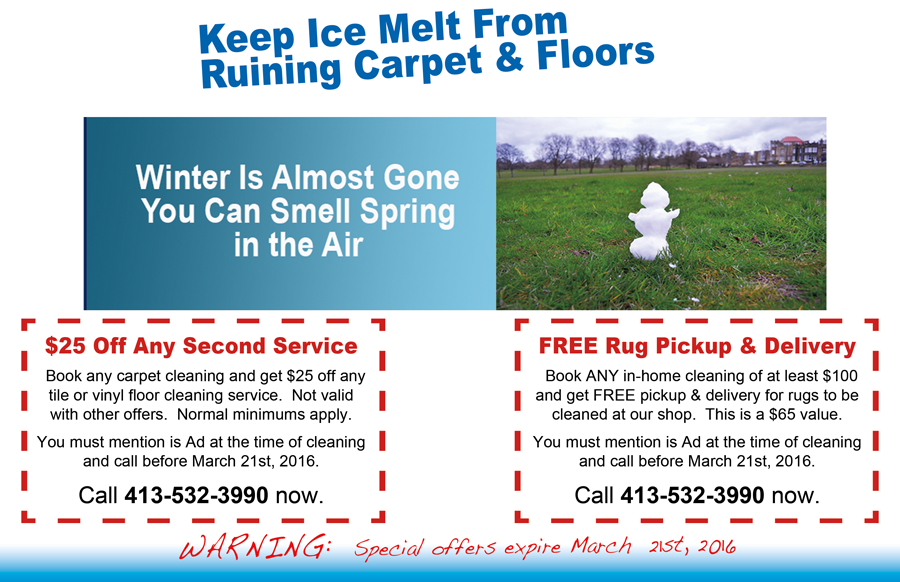Ice Melt Can Ruin Your Carpets
Keep Ice Melt From Ruining Your Carpets And Floors
Your carpets and floors don’t look as nice at the end of the winter season. Would you believe Ice Melt, and salts are largely to blame for this?
Salts, sand and other materials we use to keep from falling get scattered all over the place, and every time you get into your car or walk into your home these potentially harmful chemicals are tracked in.
 What Ice Melt Can Do To Carpet and Rugs !
What Ice Melt Can Do To Carpet and Rugs !
Your first line of defense! Vacuuming. By vacuuming throughly the salt or sand crystals will not get embedded into your carpet or rug fibers or worst into the backing. Vacuuming is just the first step, many types of salts and ice melts will cause a sticky residue which can cause ugly spots wear spots, and traffic patterns. To prevent this from happening a through carpet or rug cleaning needs to be done , If you can wait the end of winter is an idea time, If cannot you can always have traffic lanes only cleaned to help get you through the winter months.
What Does Ice Melt Do To Your Floors?
The First thing you may notice is an oily film that can get quite slippery ( very much so when wet) this can be a slip and fall hazard. On a second note the floors finish or sealants can become compromised. Frequent sweeping and mopping are needed to keep the floors integrity. Even with constant attention the chemicals used in ice melt pose a potential threat to the protective coatings on wood floors natural stone, tile and grout even vinyl floors . ( Damp Mopping with a PH neutral cleaner with help to remove these residues) A professional should preform a deep cleaning process between on year and 18 months.
What about your pets?
Ice Melt can be toxic . Your pets may absorb the ice melt by laying on the floor, or through their paws, once the ice melt is on them it can easily be transferred to their mouths. While some mat think this is a scare tactic here is an excerpt from the pet poison help line “All types of ice melts have a potential to be hazardous. In general, most ice melt exposures are limited to gastrointestinal upset and local dermal irritation but there is a potential for more serious, life threatening side effects. It is important to educate clients on the potential risks of exposure and inform them of proper storage and use so that exposures can be avoided.”

